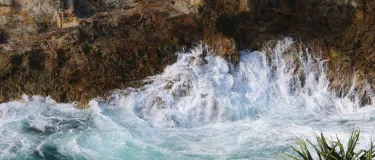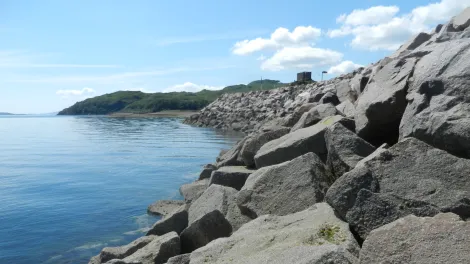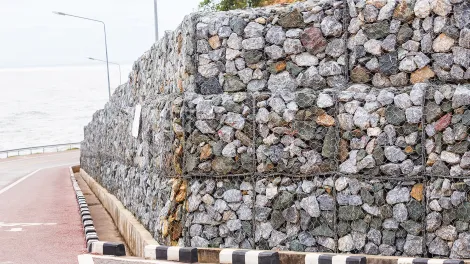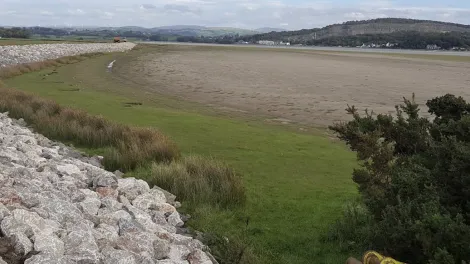Types of Coastal Erosion

The dynamic interplay between land and sea has shaped the Earth's coastlines for thousands of years. In the United Kingdom, this ongoing natural process has played a pivotal role in creating a unique and stunning coastal profile. However, for coastal communities and fragile ecosystems, there has certainly been a price to pay.
In this guide we’ll be looking at the multifaceted nature of coastal erosion, its causes and types, along with the direct impact it continues to have on infrastructure and the environment.
Erosion
Erosion specifically refers to the movement of rock particles by natural agents like wind and water. In this process, fragments of rock are not just worn down but are also transported away from their original location, contributing to the reshaping of landscapes.
1. Geological erosion
The geological aspect of coastal erosion encompasses several processes, each making a unique contribution to the transformation of a coastline.
Abrasion
Abrasion is a natural process where sand and small pebbles act as tools of erosion, gradually wearing down and smoothing the contours of shorelines and headlands. Often likened to the effect of sandpaper, this process is most pronounced during stormy conditions. During such times, waves, laden with sediment, crash against cliff faces with considerable force, effectively grinding away at the rock. This form of coastal erosion is particularly impactful when it concentrates at the base of cliffs. Such focused erosion can significantly weaken the cliff structure, increasing the likelihood of large sections collapsing.
Hydraulic action
In the natural setting of a cliff face, any existing cracks or voids are typically filled with air. When a wave strikes the cliff and covers these openings, the air trapped inside becomes compressed as the wave forces water into these narrow spaces. This sudden increase in pressure can weaken the rock around the crack's edges, leading to the chipping off of small rock fragments. As the wave retreats, the compressed air rapidly expands, creating a forceful decompression that 'explodes' out of the crack. This explosive action can further weaken the rock structure around the crack and eject loosened pieces from within. Through this process, known as hydraulic action, the relentless force of waves contributes to the erosion of the cliff face.
Attrition
Attrition is a significant factor in coastal erosion, occurring primarily through the collision and transportation of rocks. During this process, rock fragments and pebbles incessantly collide and grind against each other. This constant abrasion leads to their gradual transformation, making them smoother, smaller and more rounded over time, even turning larger boulders into smaller rocks, and eventually into sand. The extent of attrition is influenced by a variety of factors. These include the properties of the particles themselves, such as their size, shape, surface texture and hardness. Environmental aspects also play a role, including the duration of exposure to erosive forces, the velocity and pressure of the waves and the temperature conditions. Together, these elements dictate the rate and intensity of attrition, shaping the coastal terrain over time.
2. Human-induced erosion
Human activities have significantly altered coastal processes, often exacerbating natural erosion. It is known as the anthropogenic factor, meaning pollution or environmental change originating in human activity.
Engineering structures
Although structures like sea walls, groynes and breakwaters are designed to protect the coast, they can disrupt the natural movement of sediment. This often leads to increased erosion in other areas, as the natural balance of sediment deposition and erosion is disturbed.
Pollution
Pollution weakens coastal structures and accelerates erosion by changing the chemical composition of the water and the rocks. Industrial waste, oil spills and other pollutants can significantly hasten the erosion process.
Climate change and rising sea levels
Driven by global warming, climate change has led to increased storm intensity and higher sea levels, contributing significantly to the rate and extent of coastal erosion. These changes result in more frequent and severe coastal flooding and erosion events.
Exploring Methods for Combatting Coastal Erosion
Here at Aggregate Industries, we have an array of Sea and Flood Defence aggregate solutions that are well-suited to cater to the evolving requirements in a world where rising sea levels are an increasing concern.
In this section, we’ll examine four primary products that are already making a significant impact around the UK:
Armourstone
Armourstone stands as a robust and versatile solution for coastal protection and erosion control. This specialised material, typically large, durable stones, serves as a protective barrier against the forces of nature, preventing erosion and safeguarding coastal infrastructure. Deployed strategically, Armourstone absorbs wave energy, mitigates the impact of storms, and provides long-lasting stability to shorelines. Beyond its formidable protective qualities, Armourstone enhances the aesthetic appeal of coastal areas, seamlessly blending functionality with natural beauty.
Gabion Stone
Gabion Stone is a versatile and effective solution in the realm of landscape design, infrastructure, and erosion control. Consisting of durable stones encased in wire mesh or baskets, Gabion Stone acts as a robust solution for retaining walls, bridges, and other civil engineering projects, providing stability and durability. Moreover, in erosion control, these stone-filled structures act as an effective barrier against the forces of water, preventing soil erosion and enhancing the resilience of coastal areas.
Rip Rap
Rip Rap serves as a robust and versatile solution for shoreline protection, erosion control, and slope stabilisation. Comprising large, durable stones strategically placed to form a protective barrier, Rip Rap effectively absorbs and dissipates the energy of waves and flowing water. This key characteristic makes it an ideal choice for fortifying coastlines, riverbanks, and other vulnerable areas against the erosive forces of nature. Beyond its protective function, Rip Rap enhances ecological diversity by creating habitats for various aquatic species.
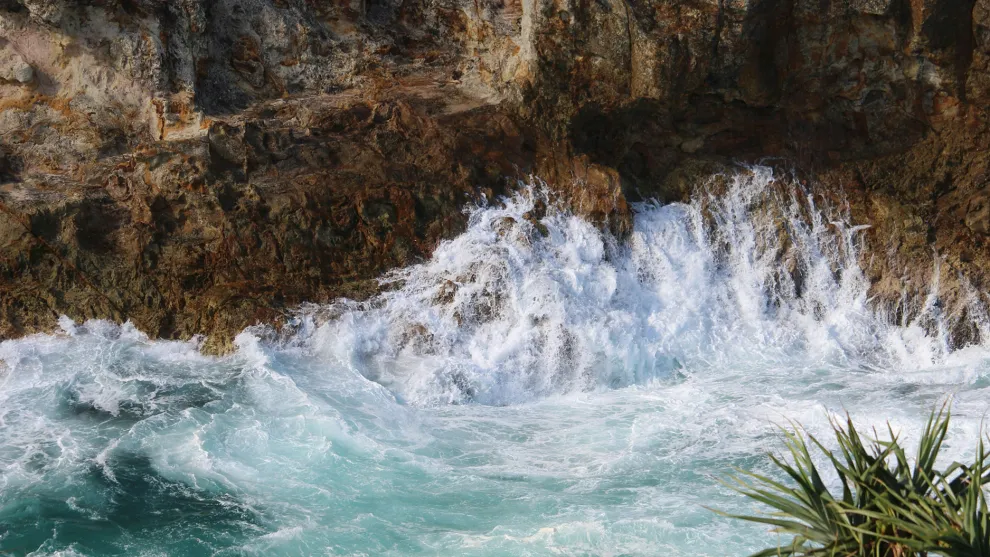
Factors influencing the rate of erosion
The rate of coastal erosion is influenced by several factors, with the strength of waves breaking along the coastline being the most significant.
Wave power
The power of a wave is largely determined by its fetch (the distance over water that the wind blows) and the wind speed. Longer fetches and stronger winds generate larger, more forceful waves, endowing them with greater erosive capability. However, as waves near the coastline, they lose some of their energy due to increased friction with the seabed. This interaction means that the underwater topography of the ocean or sea bed also plays a crucial role in modulating the strength of waves.
The presence of certain landforms can further influence a wave's erosive power. Beaches, for instance, extend the distance a wave must travel before reaching the cliffs of a coastline, thereby diminishing its energy. Headlands, on the other hand, can refract waves around them, reducing their erosive impact at one location while potentially intensifying it at another.
Human activity
Human activities, as in many natural processes, have complex and varied effects on coastal erosion. Often, these activities tend to amplify the strength of waves. Dredging, commonly undertaken to enhance shipping capacities, is one such activity. It reduces the energy dissipation of incoming waves, thereby increasing the rate of erosion along affected coastlines.
Lithology
Lithology, which examines a rock's physical properties, significantly influences coastal erosion rates. Hard rocks like granite are erosion-resistant, leading to slower changes in coastlines like that at Land’s End. In contrast, softer rocks such as limestone erode faster, as seen in Dorset's chalk cliffs.
The geology of a coastline, often visible as bands of different rock types from above, determines whether it's a concordant or discordant coastline. In concordant coastlines, hard rock layers parallel to the coast protect the softer rocks behind, but if breached, rapid erosion can occur, forming features like Lulworth Cove.
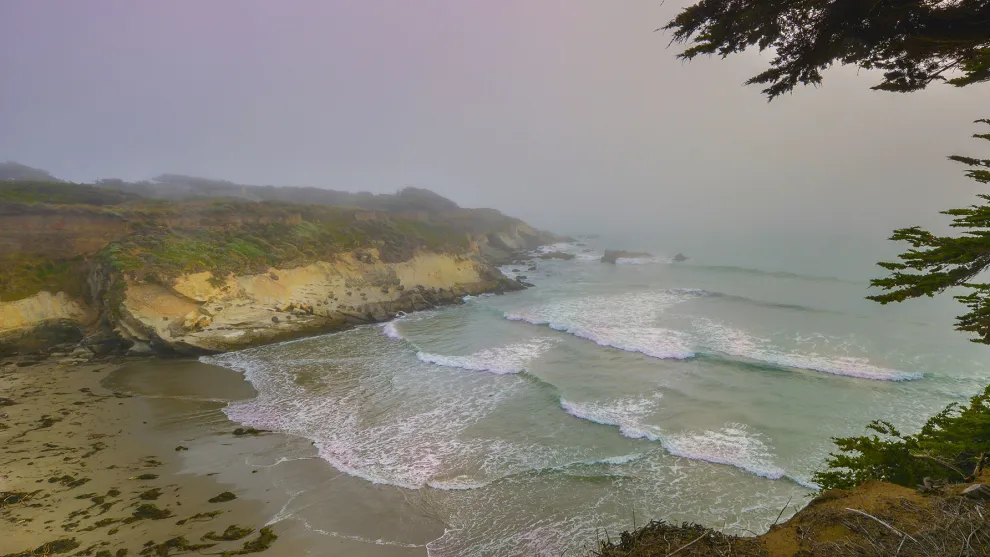
The impact of coastal erosion
A powerful force bringing about significant consequences, the effects of coastal erosion extend beyond the mere reshaping of landscapes, deeply influencing the lives of communities, altering ecosystems and challenging existing infrastructure.
Environment
The environmental impact of erosion includes the loss of habitats, changes in landscape and a reduction in biodiversity. It can lead to the destruction of crucial ecosystems, such as wetlands and sand dunes, which play a vital role in coastal ecology.
Infrastructure
Erosion can damage roads, bridges and other infrastructure, leading to costly repairs and maintenance. It also poses a threat to historical sites and landmarks, many of which are located along coastlines.
Communities
Erosion can lead to the loss of homes, businesses and agricultural land. It disrupts local economies and can lead to the displacement of communities, posing significant social and economic challenges.
Data from the Environment Agency data and regional Shoreline Management Plans have revealed that £548 million worth of UK property is at risk of succumbing to coastal erosion by 2100. North Norfolk alone could lose over 400 properties in the next 75 years with property damage estimated at over £100 million.
Happisburgh - a community on the edge
Happisburgh, a village in Norfolk, UK, serves as a stark example of the dramatic effects of coastal erosion. Over the years, this village has witnessed significant shoreline retreat, leading to the loss of properties and raising critical questions about adaptation strategies, compensation for affected communities and the future of coastal management.
The case of Happisburgh highlights the need for sustainable coastal management practices that can adapt to and mitigate the effects of erosion.
In Happisburgh, the erosion has been particularly aggressive, with some estimates suggesting that over 35 metres of land has been lost in the last century. The village's plight gained national attention as images of houses teetering on the edge of eroded cliffs circulated in the media.
The situation in Happisburgh is a microcosm of the larger challenges faced along the UK's coastline, where traditional approaches to coastal defence, such as seawalls and groynes, are increasingly inadequate in the face of more powerful storms and rising sea levels.
In response to Happisburgh's erosion, there have been efforts to reinforce existing sea defences, but these have often proved to be temporary solutions. The concept of 'managed retreat' has also been considered, where the focus shifts from defending the coastline to adapting to its natural changes. This approach involves allowing certain areas to erode and flood naturally, creating new habitats and redistributing sediment along the coast. However, managed retreat raises complex issues of property rights, compensation and community relocation.
Happisburgh underscores the urgent need for innovative and sustainable coastal management strategies that can cope with the realities of climate change and sea-level rise. It also highlights the importance of involving local communities in decision-making processes and developing policies that are both environmentally and socially responsible.
The significance of studying erosion patterns
Studying erosion patterns is crucial for predicting future shoreline changes, planning effective coastal defences, and implementing sustainable management strategies. It helps in understanding the long-term implications of erosion and in developing approaches that balance environmental conservation with human needs.
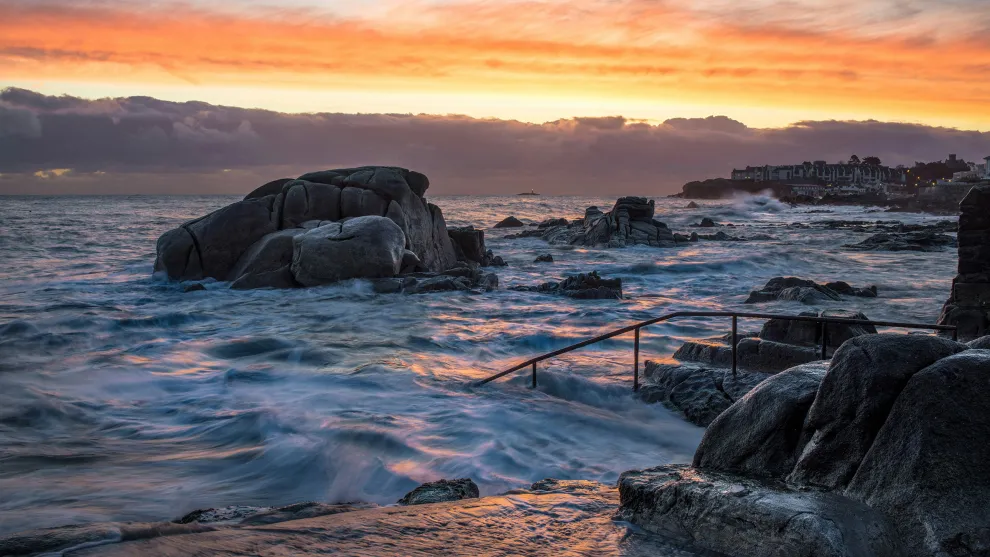
The difference between erosion and weathering
Along with erosion, weathering is a fundamental geological process responsible for breaking down rocks into finer particles.
Weathering weakens and breaks down the rocks, while erosion carries these weathered particles to new locations. Together, these processes play a crucial role in the continuous transformation of the Earth's surface.
Forms of weathering
Weathering involves the degradation of rocks without their displacement. It acts on rocks at their existing location, altering their structure, composition and appearance over time. This process is primarily driven by environmental factors such as temperature fluctuations, water, and biological activity. Weathering is a slow but persistent force that weakens coastal rocks, making them more susceptible to forms of erosion.
Freeze-thaw weathering
Even the hardest rocks are not impervious to the subtle yet powerful effects of water. When water finds its way into the smallest of cracks and freezes, it expands, exerting a significant force. This expansion gradually widens the cracks, and with the continuous cycle of freezing and thawing, rocks eventually fracture and break apart. The result is the formation of scree, a collection of broken rock fragments.
Exfoliation weathering
Predominant in warmer climates, exfoliation weathering occurs due to the daily temperature fluctuations. Rocks heat up and expand under the daytime sun, only to contract as temperatures drop at night. This ongoing expansion and contraction cycle eventually causes the outer layers of the rock to peel off, much like the layers of an onion, leading to the flaking away of small rock pieces.
Biological weathering
Biological weathering is the breakdown of rocks by living organisms. Trees play a significant role in this process; as their roots grow and extend into the ground, they can force rocks apart. Similarly, ivy climbing up buildings can loosen bricks. On a smaller scale, organisms like lichen and moss contribute to this process, gradually wearing down rock surfaces over time.
Chemical weathering
Chemical weathering is a process where the composition of coastal rocks is altered by the continuous interaction with rain and seawater, leading to their gradual disintegration:
Hydrolysis is another aspect of chemical weathering, particularly affecting rocks containing minerals reactive to water or the chemicals within it, such as limestone or chalk. This process involves the breakdown of these minerals upon contact with water, leading to a loss of the rock's coherence and structure.
Oxidation is a chemical reaction that can occur on cliff faces and shoreline rocks, especially where iron elements are present within the rock structure. Similar to the rusting process in metals, the oxidation of the iron content in rocks can lead to their weakening and eventual disintegration. This 'rusting' effect contributes to the gradual wearing away of rock formations along coastlines.
Conclusion
Coastal erosion, with its multifaceted types and impacts, presents an ongoing challenge. A comprehensive understanding of this natural process is vital for preparing and adapting to its changes, ensuring the safety, sustainability and resilience of coastal communities and ecosystems.
As we continue to witness the evolving landscape of our coastlines, it becomes increasingly important to respect and understand the power of nature and the role we play in shaping our coastal future.





